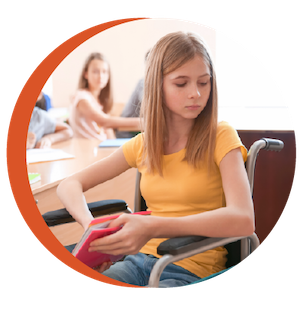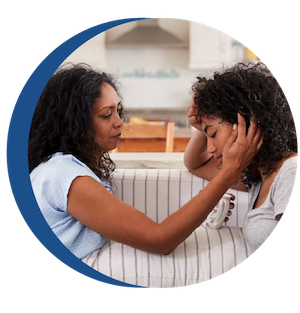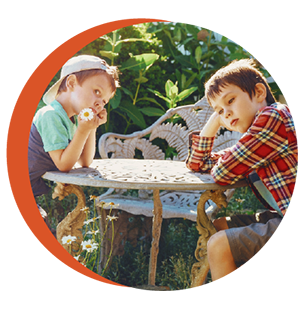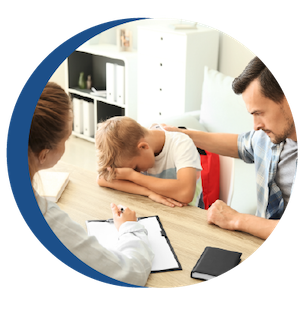What is bullying?
 Bullying is when someone repeatedly tries to hurt someone else on purpose, and it usually involves an imbalance of power. Bullying can include actions such as making threats, spreading rumors, attacking someone physically or verbally, and purposely excluding someone from a group. Everyday conflict and accidents happen, but they are not repeated and do not include a power imbalance or an intent to harm.
Bullying is when someone repeatedly tries to hurt someone else on purpose, and it usually involves an imbalance of power. Bullying can include actions such as making threats, spreading rumors, attacking someone physically or verbally, and purposely excluding someone from a group. Everyday conflict and accidents happen, but they are not repeated and do not include a power imbalance or an intent to harm.
Kids who bully want to be in control. They often find rewards in their behavior; whether it’s a material reward, such as taking someone’s lunch money, or a psychological reward, such as feeling powerful.
Learn More
What is bullying? fact sheet
Anti-bullying laws and policies
 Per Wisconsin state law, school districts must have policies in place to address bullying. They should also have policies regarding contacting parents, reporting incidents and disciplining the students involved.
Per Wisconsin state law, school districts must have policies in place to address bullying. They should also have policies regarding contacting parents, reporting incidents and disciplining the students involved.
Wisconsin also has policies and laws to prevent bullying and to protect children and teens. Anti-bullying laws cover all types of bullying, including cyberbullying.
In addition, every school district is required to handle complaints of harassment. Contact your school to find out who is designated to receive complaints and what the complaint procedure is.
Learn more
Anti-bullying laws and policies fact sheet
What should I do if my child is being bullied?
 If you think your child is a victim of bullying, there are some things you should and shouldn’t do.
If you think your child is a victim of bullying, there are some things you should and shouldn’t do.
Do:
- Initiate a conversation in a quiet place that is free of interruptions and distractions such as TV and cell phones.
- Remember to stay calm.
- Let your child know that you are on his or her side and that you are going to do everything you can to help.
Don’t:
- Try not to overreact; you want to stay calm and gather as much information as possible.
- Threaten the child doing the bullying yourself
- Confront the parents of the child doing the bullying
Learn more
What should I do if my child is being bullied? fact sheet
What should I do if my child is bullying others?
 Signs that your child may be bullying others include:
Signs that your child may be bullying others include:
- Gets into physical or verbal fights
- Hangs out with other kids who bully
- Has trouble accepting blame
- Gets upset when he or she cannot use the computer or cell phone
- Quickly switches or closes computer programs or apps when you walk by
When talking with your child, be sure to address the following:
- It is never OK to bully another child.
- Make sure your child is aware of what behaviors are considered bullying.
Learn more
What should I do if my child is bullying others? fact sheet
How do I talk to my child about bullying?
 You may not know where to begin, but it’s important to talk to your child about bullying even before it occurs. You can start by having a general discussion about bullying. Children will often share instances of bullying they’ve experienced once the discussion comes up. Make it an ongoing conversation and touch base regularly, asking questions like:
You may not know where to begin, but it’s important to talk to your child about bullying even before it occurs. You can start by having a general discussion about bullying. Children will often share instances of bullying they’ve experienced once the discussion comes up. Make it an ongoing conversation and touch base regularly, asking questions like:
- How’s it going at school?
- Who did you eat lunch with?
- What situations can you think of where you wouldn’t feel safe at school?
- Give examples of bullying and ask your child if he or she has seen similar things happening at school.
Learn more
How do I talk to my child about bullying? fact sheet
How do I talk to my teen about bullying? fact sheet
How do I help my child develop resiliency?
 Resiliency is the ability to cope with challenges and recover faster from negative events or feelings. No matter the age of your child, the following factors will have a positive impact on their resiliency:
Resiliency is the ability to cope with challenges and recover faster from negative events or feelings. No matter the age of your child, the following factors will have a positive impact on their resiliency:
- At least one secure attachment relationship
- Access to a wider support system, such as extended family and close friends
- Structure and rules at home
- Positive school experiences
- Good self-esteem
- Good role models
- Letting your child work on a solution, offering suggestions only when asked
Learn more
How do I help my child develop resiliency? fact sheet
How do I help my teen develop resiliency? fact sheet
How do I protect my child from cyberbullying?
 With constantly changing forms of digital technology, it can feel overwhelming when trying to protect your child from cyberbullying. To help keep your child safe when using technology, it’s important to:
With constantly changing forms of digital technology, it can feel overwhelming when trying to protect your child from cyberbullying. To help keep your child safe when using technology, it’s important to:
- Establish clear rules and expectations for using all forms of technology.
- Be open with your child about the harmful effects of cyberbullying, along with the positive sides of technology and social media.
- Be a role model with your own social media accounts.
- Share with your child that you are there to listen and help them if they ever experience an issue with cyberbullying.
If your child does become a victim of cyberbullying, talk to them and ask how they are feeling. Should cyberbullying occur, your child should:
- Resist the urge to reply.
- Save any evidence of the bullying.
- Block and report the person who is cyberbullying.
Learn more
How do I protect my child from cyberbullying? fact sheet
What do I do when bullying is closer to home?
 Unfortunately bullying can happen anywhere, not just at school. To help your child deal with instances of bullying at home or in the neighborhood, there are some important steps you can take:
Unfortunately bullying can happen anywhere, not just at school. To help your child deal with instances of bullying at home or in the neighborhood, there are some important steps you can take:
- Stay calm.
- Talk to your child and listen so you have a clear picture of what might be happening.
- Develop a safety plan for your child.
- Keep a log of where the incidents occur.
- Talk to your neighbors.
If you feel bullying is happening within your own home, it’s important to remember that there is a difference between sibling rivalry and sibling aggression. Sibling aggression is a form of bullying, should not be ignored, and needs to have set consequences when it occurs. To help prevent sibling aggression, try encouraging and rewarding positive behavior.
Learn more
What do I do when bullying is closer to home? fact sheet
What is sexual harassment?
 Sexual harassment is when bullying focuses on someone’s body, appearance, or sexual orientation (real or perceived). This form of harassment can be done by anyone. Both boys and girls could be the victim or the child bullying. It is important to teach your child the difference between joking, flirting and harassment. Let them know that if they experience any form of sexual harassment, they should say “stop” and go to a trusted adult for help. If your child is being sexually harassed at school:
Sexual harassment is when bullying focuses on someone’s body, appearance, or sexual orientation (real or perceived). This form of harassment can be done by anyone. Both boys and girls could be the victim or the child bullying. It is important to teach your child the difference between joking, flirting and harassment. Let them know that if they experience any form of sexual harassment, they should say “stop” and go to a trusted adult for help. If your child is being sexually harassed at school:
- Find out what the school’s sexual harassment policy is and ask for help.
- Keep a record of incidents, including dates, times, and specific details.
- Save any photos or other evidence such as texts or screenshots.
Learn more
What is sexual harassment? fact sheet
How do I contact my child's school if my child is a victim of bullying?
 If you believe your child or teen has been a victim of bullying at school, it’s important to contact the school, following this suggested chain of command when reporting. Start by having a conversation with your child’s teacher. If they are unable or unwilling to help with the situation, then move down the list until your concerns are handled appropriately and there is a resolution to the bullying problem.
If you believe your child or teen has been a victim of bullying at school, it’s important to contact the school, following this suggested chain of command when reporting. Start by having a conversation with your child’s teacher. If they are unable or unwilling to help with the situation, then move down the list until your concerns are handled appropriately and there is a resolution to the bullying problem.
Chain of command:
- Classroom teacher
- School counselor or social worker
- School principal
- School superintendent
Remember that often the concerns you have as a parent can make you very emotional. When you are talking to individuals at your child’s school, make sure to be respectful and stay calm. While schools cannot share private information regarding other students, Wisconsin law requires schools to have a plan in place for handling bullying incidents that includes investigating, reporting, and disciplining.
Learn more
How do I contact my child’s school if my child is a victim of bullying? fact sheet